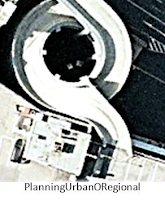When demand is so high there is no point keeping hidden costs and policies.
Planning to buy a home? For some, it's joy of their life, for some it’s a mission, for some their livelihood but for many, it’s a pain. Pain of market research, confusion of what to choose, whom to trust, struggle of monetary arrangement, fear of being cheated, horror of future encounter with inevitable unpleasant surprises associated with real estate deals in constantly changing landscape of real estate market, volatile banking and public policies, unstable political and people’s affair and so on.
There are so many places where your real estate judgment might go wrong no matter how smart, how educated and how networked you are. Forget about the traits and circumstances which are beyond your control. So volatile this whole affair is that at times it feels like it's a game of luck to finally secure a place without any conflict of guesswork and reality, which you can call your home sweet home.
Long completion cycle of real estate development especially in case of housing and apartments, makes it more vulnerable and susceptible to volatile market and changing policy environment, susceptible to changes in policies and contracts leading to additional fiscal burden, majority on customer’s side and some on developers as well and to monetary losses occurred mostly to buyers who failed to understand the fine intricacies of initial contracts and hidden policies.
In midst of all this confusion you either hire or get channelized through someone or a firm apparently specialized in real estate dealings to make your life easy, only to realize that they have their own hidden policies and excuses to add to your frustrations.
Acknowledging and understanding the inevitability of market dynamism and inevitable growth in housing demand with little bit of fluctuation here and there time to time, a whole new approach is needed in the functioning of real estate affair.
You are a customer; you want to buy a house rather home, you know your financial condition, you know your aspirations and limitations. You see a home advertisement at fabulously low price in local newspaper or on internet with an assumed star (*) or applied conditions, you are already comfortable with that, you match your budget, you find out more just to realize that there are considerable hidden charges, you think for a while, going ahead seeing the same prevalent story everywhere, you go to bank for monetary help, they have their own complex structure of policy documentation difficult to fathom right away, leave it aside for a while because you urgently need loan for your sweet home, you do the deal formality with developer while realizing that there are secondary and even tertiary level of hidden charges. Finally your deal is completed, but someone just comes to you and tells you that there are additional visitor parking charges subjected to availability, really high annual club charges you can’t escape, Monthly fixed or accelerating maintenance charges for several amenities you won’t be using ever, not to speak of the security and other welfare charges which issues would occurs later in future if you want to live there. And unfortunately you can’t hold developer liable for many of these things because they will say these monetary activities are beyond their scope of contract and deal. Oh, and don’t forget recently revised property related tax policies which is going to go increasingly taxing on your already demanding fiscal health.
Now, you are a developer, you are in this business for long, you know the intricacies very well, you adjust your position as market and policies change, you see that your business in not going to go down ever in future due to insanely high housing and real estate demand apart from occasional dip, you are in a position to dictate the terms so you don’t have to worry. Of course changes in real estate laws and public policy as well as volatility of politics and people’s affair are going to affect your business, but you are sure you will be able to recover what you want from those existing or prospective customers.
For every single customer who can’t afford the price you are offering for a piece of real estate work you are creating, there would be dozens of willing customers to buy the same piece of project. Acknowledging the strong and more or less stable future real estate growth, as well as abundance of customers, it’s your responsibility as a developer to be as transparent in your offers, deals and policies as possible. It will benefit both customers as well as developer. Customer will know early what is within their reach based on their financial position and assessment of realistic real estate offers and their search for house would be less painful and more fruitful, speedy and less frustrating. Developers should declare every possible instance where an additional cost burden can occur to a customer along with its tentative quantum, should declare every possible project constraint and policy in big bold font, emphasizing every liable policy changes and unexpected future charges based on their industry and regional experience. What worst can happen by this approach? You might lose a customer or two, but with such a huge customer base, who cares! It will sure have advantage both ways. Developers will get real customers rather than ghost customers, their transaction turnaround time would reduce considerably, their dealing process would be smoother, more transparent and honest and they can reinvest that saved time and money back into customer service, building repeat customers and word-of-mouth publicity as well as providing better customer service. Not to speak of huge value addition to company’s brand image. Customers will have in tern fair choice of selection, without any hidden fiscal or psychological burden, after all one can only buy a house with a price tag which he or she can afford.
Public agencies would always be there to help, assist and control the exceedingly high real estate prices to keep the ball rolling and to keep it within reach of a city dweller, common or exclusive. Considering the positive effect it’s an option worth exploration.
By: Anoop Jha


































